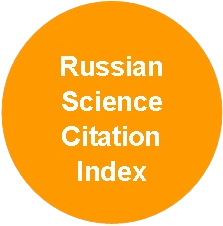Пространственное распределение сосновых лесов Кавказа
DOI:
https://doi.org/10.37482/0536-1036-2025-2-92-111Ключевые слова:
Pinus sylvestris, моделирование распространения, концепция ВАМ, пространственный масштаб, Maxent, Северный КавказАннотация
Эффективным подходом к изучению факторов распространения лесообразующих видов Кавказа в условиях орографической труднодоступности горных территорий является сочетание использования геоинформационных систем и теории экологической ниши в моделях распределения SDM. Дискуссионными остаются многие аспекты данного подхода, в т. ч. выбор экологических предикторов, коллинеарность переменных, эффект масштаба исследуемой территории, формализация в моделях биотических факторов и расселительной способности видов. Цель статьи – выявить закономерности пространственного распределения сосновых лесов Кавказа (Pinus sylvestris L.) в зависимости от площади анализируемой территории. Для формализации биотического фактора распространения сосняков предложен метод включения карт распределения вероятностей обнаружения видов-конкурентов (березовые леса из Betula pendula Roth и B. litwinowii Doluch.) в SDM-модель P. sylvestris в качестве биотических слоев. Фактор расселительной способности сосны (доступности территорий) формализован через расстояние от оптимальных местообитаний вида (участков с порогом пригодности 0,8), на которых вероятность его обнаружения сохраняется выше 0,5. Сравнительный анализ разных наборов абиотических предикторов с учетом мультиколлинеарных переменных и без него выявил преимущества модели, полученной на основе набора данных ENVIREM (Environmental Rasters for Ecological Modeling), ограниченного VIF-тестом (Variance Inflation Factor). На локальном уровне (Центральный Кавказ) основным предиктором расположения сосновых лесов выступает доступность территорий – 0–3 км от оптимальных местообитаний (вклад в модель – около 72 %). На региональном уровне (Кавказ в целом) большое значение имеет межвидовая конкуренция (вклад в модель – около 37 %). Наименее значимы в распространении сосновых лесов основные абиотические факторы (орография местности и температурно-водный режим самого сухого квартала), долевое участие которых в итоговых моделях не превышает 16 %. Для вида установлено потенциально широкое распространение на Кавказе в районах с разнообразными климатическими и орографическими условиями (около 21 тыс. км2). Центр кавказского ареала сосны прогнозируется на Центральном Кавказе (96 % площади оптимальных местообитаний).
Скачивания
Библиографические ссылки
Акатов В.В., Акатов П.В., Майоров С.В. Тенденции изменения высотного ареала пихты нордмана на Западном Кавказе (бассейн р. Белая) // Изв. Рос. акад. наук. Сер.: Географич. 2013. No 2. С. 104–114. Akatov V.V., Akatov P.V., Majorov S.V. Trends in Altitude Area of Nordmann Fir in the Western Caucasus (Basin of Belaya River) in the Relation with the Global Warming Issue. Izvestiya Rossiiskoi Akademii Nauk. Seriya: Geograficheskaya, 2013, no. 2, pp. 104–114. (In Russ.).
Бебия С.М. Лесные ресурсы Черноморского побережья Кавказа: проблемы и перспективы их рационального использования // Сиб. лесн. журн. 2015. No 1. С. 9–24. Bebia S.M. Forest Resources of the Caucasian Black Sea Coast: Problems and Prospects of Rational Use. Sibirskij lesnoj zhurnal = Siberian Journal of Forest Science, 2015, no. 1, pp. 9–24. (In Russ.).
Галушко А.И. Основные рефугиумы и реликты в высокогорной флоре западной части Центрального Кавказа // Проблемы ботаники. Растительный мир высокогорий и его освоение. Л.: Наука, 1974. Т. 12. С. 19–26. Galushko A.I. Main Refugia and Relics in the Highland Flora of the Western Part of the Central Caucasus. Problems of Botany. Highland Flora and Its Development. Leningrad, Nauka Publ., 1974, vol. 12, pp. 19–26. (In Russ.).
Горнов А.В., Горнова М.В., Тихонова Е.В., Шевченко Н.Е., Кузнецова А.И., Ручинская Е.В., Тебенькова Д.Н. Оценка сукцессионного статуса хвойно-широколиственных лесов европейской части России на основе популяционного подхода // Лесоведение. 2018. No 4. С. 243–257. Gornov A.V., Gornova M.V., Tikhonova E.V., Shevchenko N.E., Kuznetsova A.I., Ruchinskaya E.V., Tebenkova D.N. Population-Based Assessment of Succession Stage of Mixed Forests in European Part of Russia. Lesovedenie = Russian Journal of Forest Science, 2018, no. 4, pp. 243–257. (In Russ.). https://doi.org/10.1134/S0024114818040083
Ермаков Н.Б., Абдурахманова З.И., Потапенко И.Л. К проблеме синтаксономии сосновых лесов (Pinus sylvestris var. hamata) с участием бореальных флористических элементов в Дагестане (Северный Кавказ) // Turczaninowia. 2019. Т. 22, No 4. С. 154–171. Ermakov N.B., Abdurakhmanova Z.I., Potapenko I.L. To the Problem of Syntaxonomy of Pine Forests (Pinus sylvestris var. hamata) with the Participation of Boreal Floristic Elements in Dagestan (North Caucasus). Turczaninowia, 2019, vol. 22, no. 4, pp. 154–171. (In Russ.). https://doi.org/10.14258/turczaninowia.22.4.16
Жучкова В.К., Раковская Э.М. Методы комплексных физико-географических исследований. М.: Академия, 2004. 368 с. Zhuchkova V.K., Rakovskaya E.M. Methods of Complex Physical and Geographical Research. Moscow, Akademiya Publ., 2004. 368 p. (In Russ.).
Комарова А.Ф., Куксина Н.В., Зудкин А.Г. Картографирование темнохвойных лесов Северо-Западного Кавказа методом нейронных сетей // Соврем. проблемы дистанционного зондирования Земли из космоса. 2016. Т. 13, No 5. С. 157–166. Komarova A.F., Kuksina N.V., Zudkin A.G. Mapping of the North-West Caucasus Dark-Coniferous Forests with Neural Network Approach. Sovremennye problemy distantsionnogo zondirovaniya Zemli iz kosmosa, 2016, vol. 13, no. 5, pp. 157–166. (In Russ.). https://doi.org/10.21046/2070-7401-2016-13-5-157-166
Мильков Ф.Н. Физическая география СССР. Общий обзор. Европейская часть СССР. Кавказ. М.: Мысль, 1976. 448 с. Milkov F.N. Physical Geography of the USSR. General Overview. European Part of the USSR. The Caucasus. Moscow, Mysl’ Publ., 1976. 448 p. (In Russ.).
Петрова И.В., Санников С.Н., Темботова Ф.А., Санникова Н.С., Фарзалиев В.С., Моллаева М.З., Егоров Е.В. Геногеография популяций Pinus sylvestris L. Большого Кавказа и Крыма // Экология. 2017. No 6. С. 431–439. Petrova I.V., Sannikov S.N., Tembotova F.A., Sannikova N.S., Farzaliev V.S., Mollaeva M.Z., Egorov E.V. Genogeography of Populations of Pinus sylvestris L. of the Greater Caucasus and Crimea. Ekologiya = Russian Journal of Ecology, 2017, no. 6, pp. 431–439. (In Russ.). https://doi.org/10.7868/S036705971706004X
Пукинская М.Ю., Кессель Д.С., Щукина К.В. Усыхание пихто-ельников Тебердинского заповедника // Ботан. журн. 2019. Т. 104, No 3. С. 337–362. Pukinskaya M.Yu., Kessel D.S., Shchukina K.V. Drying of Fir-Spruce Forests of the Teberda Nature Reserve. Botanicheskij zhurnal, 2019, vol. 104, no. 3, pp. 337–362. (In Russ.). https://doi.org/10.1134/S0006813619030062
Рахматуллина И.Р., Рахматуллин З.З., Латыпов Е.Р. Моделирование условий произрастания и анализ вклада факторов в формирование высокобонитетных насаждений сосны (Pinus sylvestris L.) в программе Maxent (на примере Бугульминско-Белебеевской возвышенности в пределах Республики Башкортостан) // Природообустройство. 2017. No 3. С. 104–111. Rakhmatullina I.R., Rakhmatullin Z.Z., Latypov E.R. Simulation of Growing Conditions and Analysis of Factors Contribution in Formation of High Bonitet Plantings of Pine (Pinus sylvestris L.) in the Program Maxent (by the Example of the Bugulminsko-Belebeevsky Upland within the Republic of Bashkortostan. Prirodoobustrojstvo, 2017, no. 3, pp. 104–111. (In Russ.).
Темботова Ф.А., Пшегусов Р.Х., Тлупова Ю.М., Темботов Р.Х., Ахомготов А.З. Состояние лесных экосистем горных территорий Кабардино-Балкарии по данным дистанционного зондирования // Изв. Рос. акад. наук. Сер.: Географич. 2012. No 6. С. 89–97. Tembotova F.A., Pshegusov R.Kh., Tlupova Yu.M., Tembotov R.Kh., Akhomgotov A.Z. The Data on Remote Sensing and Possibility of Their Use to Evaluate the Performance of Forest Ecosystems in Mountain Territories (a Case Study of the Kabardino-Balkar Republic). Izvestiya Rossiiskoi Akademii Nauk. Seriya: Geograficheskaya, 2012, no. 6, pp. 89–97. (In Russ.).
Тумаджанов И.И. История лесов Северного Кавказа в голоцене // Вопросы голоцена. Вильнюс, 1961. С. 249–266. Tumadzhanov I.I. History of the North Caucasus Forests in the Holocene. Voprosy golotsena. Vilnius, 1961, pp. 249–266. (In Russ.).
Adhikari D., Singh P.P,, Tiwary R., Barik S., Barik S.K. Modelling the Environmental Niche and Potential Distribution of Magnolia campbellii Hook. f. & Thomson for its Conservation in the Indian Eastern Himalaya. Plants of Commercial Values. India, New Delhi, New India Publ. Agency, 2019, pp. 79–88.
Akaike H. A New Look at the Statistical Model Identification. IEEE Transactions on Automatic Control, 1974, vol. 19, iss. 6, pp. 716–723. https://doi.org/10.1109/TAC.1974.1100705
Akobia I., Janiashvili Z., Metreveli V., Zazanashvili N., Batsatsashvili K., Ugrekhelidze K. Modelling the Potential Distribution of Subalpine Birches (Betula spp.) in the Caucasus. Community Ecology, 2022, vol. 23, pp. 209–218. https://doi.org/10.1007/s42974-022-00097-4
Araújo M.B., Peterson A.T. Uses and Misuses of Bioclimatic Envelope Modeling. Ecology, 2012, vol. 93, iss. 7, pp. 1527–1539. https://doi.org/10.1890/11-1930.1
Baldwin R.A. Use of Maximum Entropy Modeling in Wildlife Research. Entropy, 2009, vol. 11, no. 4, pp. 854–866. https://doi.org/10.3390/e11040854
Boyce M.S., Vernier P.R., Nielsen S.E., Schmiegelow F.K.A. Evaluating Resource Selection Functions. Ecological Modelling, 2002, vol. 157, iss. 2–3, pp. 281–300. https://doi.org/10.1016/S0304-3800 (02)00200-4
Buchner J., Yin H., Frantz D., Kuemmerle T., Askerov E., Bakuradze T., Bleyhl B., Elizbarashvili N., Komarova A., Lewińska K.E., Rizayeva A., Sayadyan H., Tan B,, Tepanosyan G., Zazanashvili N., Radeloff V.C. Land-Cover Change in the Caucasus Mountains Since 1987 Based on the Topographic Correction of Multi-Temporal Landsat Composites. Remote Sensing of Environment, 2020, vol. 248, art. no. 111967. https://doi.org/10.1016/j.rse.2020.111967
Çoban S. Spatial Stand Structure Analysis of Uludağ Fir Forests in the Northwest of Turkey. Applied Ecology and Environmental Research, 2020, vol. 18 (5), pp. 7353–7367. https://doi.org/10.15666/aeer/1805_73537367
Daget Ph., Ahdali L., David P. Mediterranean Bioclimate and its Variation in the Palaearctic Region. Mediterranean-Type Ecosystems. Tasks for Vegetation Science. Dordrecht, Springer, 1988, vol. 19, pp. 139–148. https://doi.org/10.1007/978-94-009-3099-5_6
De Marco P.J., Nóbrega C.C. Evaluating Collinearity Effects on Species Distribution Models: An Approach Based on Virtual Species Simulation. PLoS ONE, 2018, vol. 13 (9), art. no. e0202403. https://doi.org/10.1371/journal.pone.0202403
Elith J., Franklin J. Species Distribution Modeling. Encyclopedia of Biodiversity (Second Edition). Oxford, Academic Press, 2013, pp. 692–705. https://doi.org/10.1016/B978-0-12-384719-5.00318-X
ENVIREM. Environmental Rasters for Ecological Modeling, 2023. Available at: https://envirem.github.io/ (accessed 15.03.23).
GBIF. Global Biodiversity Information Facility, 2023. Available at: https://www.gbif.org/ (accessed 5.04.23).
Gokturk A., Tıraş H. Stand Structure and Spatial Distribution of Trees at Different Developmental Stages and Stand Layers in Mixed Stands in Artvin Region, Turkey. Applied Ecology and Environmental Research, 2020, vol. 18 (5), pp. 6163–6179. https://doi.org/10.15666/aeer/1805_61636179
Hijmans R.J., Phillips S.J., Leathwick J., Elith J. Dismo: Species Distribution Modeling: R Package Version 1.3-3, 2017. Available at: https://CRAN.R-project.org/package=dismo (accessed 5.04.23).
Komarova A. Mapping of Caucasian Fir Forests (Abies nordmanniana (Stev.) Spach). Proceedings of the 12 International SCGIS Conference. USA, California, Monterey, 2013. https://doi.org/10.13140/RG.2.1.1761.8004
Păltineanu Cr., Mihălescu I.F., Seceleanu I., Dragotă C.S., Vasenciuc F. Ariditatea, Seceta, Evapotranspiraţia si Cerinţele de Apă Ale Culturilor Agricole in Romania. Constanţa, Editura Ovidius University Press, 2007. 319 р. (In Rom.).
Pearson R.G., Dawson T.P., Liu C. Modelling Species Distributions in Britain: a Hierarchical Integration of Climate and Land-Cover Data. Ecography, 2004, vol. 27 (3), pp. 285–298. https://doi.org/10.1111/j.0906-7590.2004.03740.x
Peterson A.T. Uses and Requirements of Ecological Niche Models and Related Distributional Models. Biodiversity Informatics, 2006, vol. 3, pp. 59–72. https://doi.org/10.17161/bi.v3i0.29
Peterson A.T., Soberón J. Species Distribution Modeling and Ecological Niche Modeling: Getting the Concepts Right. Natureza & Conservação, 2012, vol. 10 (2), pp. 102–107. https://doi.org/10.4322/natcon.2012.019
Phillips S.J., Dudík M. Modeling of Species Distributions with Maxent: New Extensions and a Comprehensive Evaluation. Ecography, 2008, vol. 31, iss. 2, pp. 161–175. https://doi.org/10.1111/j.0906-7590.2008.5203.x
Pshegusov R., Tembotova F., Chadaeva V., Sablirova Y., Mollaeva M., Akhomgotov A. Ecological Niche Modeling of the Main Forest-Forming Species in the Caucasus. Forest Ecosystems, 2022, vol. 9, art. no. 100019. https://doi.org/10.1016/j.fecs.2022.100019
Riley Sh.J., DeGloria S.D., Elliot R. A Terrain Ruggedness Index That Quantifies Topographic Heterogeneity. International Journal of Sciences, 1999, vol. 5, no. 1–4, pp. 23–27.
Shevchenko N.E., Geraskina A.P. Northwest Caucasus Forest Spreading Evaluation by GIS Modeling and Historical and Geographic Data Analysis. Ecological Questions, 2019, vol. 30, no. 2, pp. 47–55. https://doi.org/10.12775/EQ.2019.011
Sillero N., Barbosa A.M. Common Mistakes in Ecological Niche Models. International Journal of Geographical Information Science, 2021, vol. 35, iss. 2, pp. 213–226. https://doi.org/10.1080/13658816.2020.1798968
SRTM 90m DEM Digital Elevation Database, 2022. Available at: https://srtm.csi.cgiar.org/ (accessed 10.04.23).
Title P.O., Bemmels J.B. ENVIREM: An Expanded Set of Bioclimatic and Topographic Variables Increases Flexibility and Improves Performance of Ecological Niche Modeling. Ecography, 2018, vol. 41, iss. 2, pp. 291–307. https://doi.org/10.1101/075200
Usta A., Yılmaz M. Relationships Between Environmental Variables and the Distributions of Tree Species on the Karadağ Mass in Transition Zone of Sites, NE Turkey. Eurasian Journal of Forest Science, 2020, vol. 8, pp. 11–24. https://doi.org/10.31195/ejejfs.583261
WorldClim2. WorldClim Climate Database, 2023. Available at: https://worldclim.com/version2 (accessed 10.04.23).
Загрузки
Опубликован
Как цитировать
Выпуск
Раздел
Лицензия
Copyright (c) 2025 Р.Х. Пшегусов, В.А. Чадаева (Автор)

Это произведение доступно по лицензии Creative Commons «Attribution» («Атрибуция») 4.0 Всемирная.












